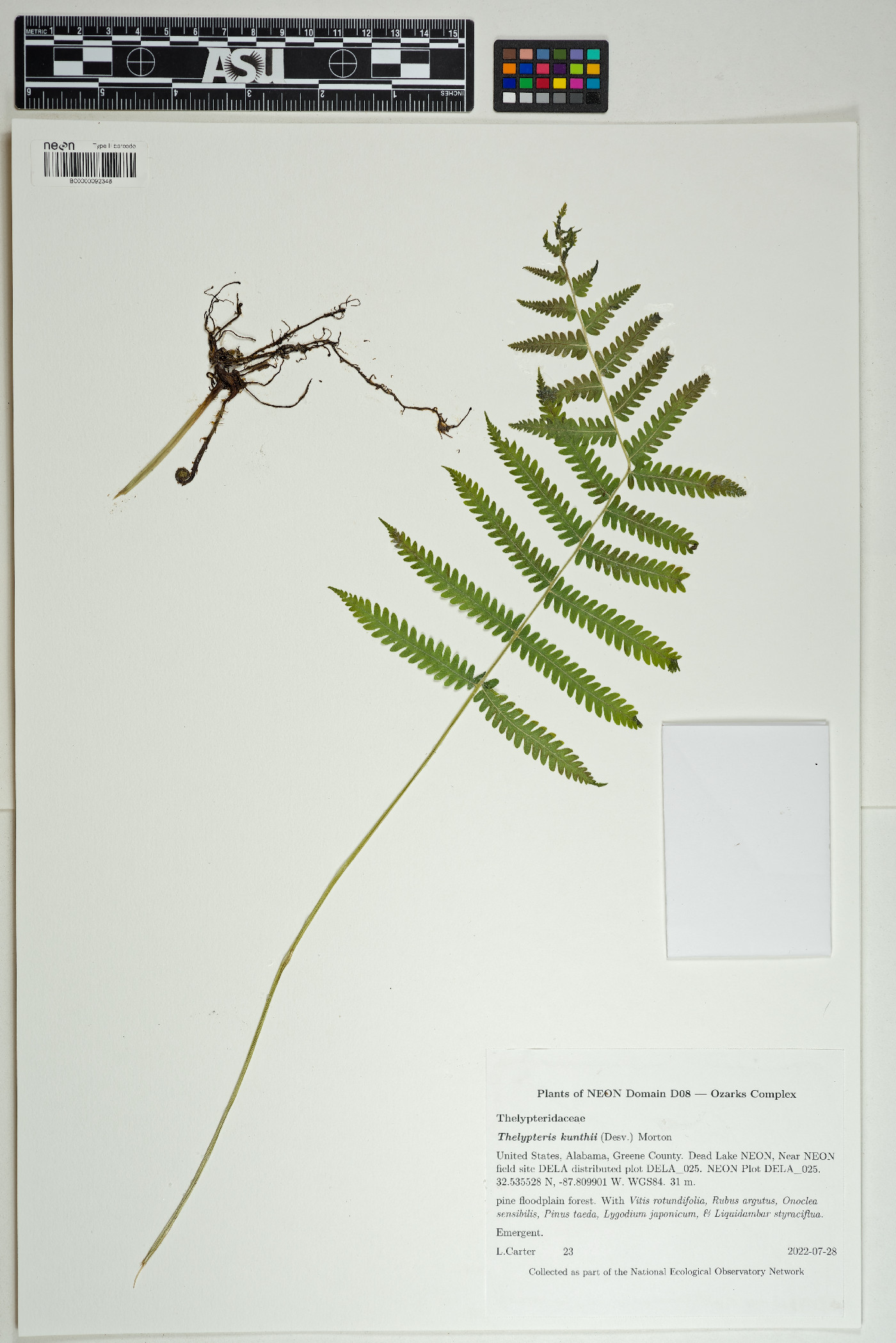|
Family: Thelypteridaceae
Kunth's maiden fern
[ Dryopteris normalis C. Chr., moreDryopteris saxatilis (R. St. John) Brown, Thelypteris kunthii (Desv.) C. V. Morton, Thelypteris macrorhizoma E. St. John, Thelypteris normalis (C. Chr.) Moxley, Thelypteris saxatilis R. St. John, Thelypteris unca R. St. John] |
Stems short- to long-creeping, 4--8 mm diam. Leaves monomorphic, evergreen, up to 2(--3) cm apart, (15--)50--160 cm. Petiole straw-colored, (5--)20--80 × (1--)3--6 mm, at base with brown, linear-lanceolate, hairy scales. Blade (9--)30--80 cm, broadest at base, gradually tapered to pinnatifid apex. Pinnae (2--)8--15(--20) × (0.6--)1--2.5 cm, incised 3/5--4/5 of width; segments oblong, rounded to acute at apex; proximal pair of veins from adjacent segments running to sinus, or nearly so. Indument abaxially of hairs mostly 0.3--1 mm on costae, veins, and blade tissue; veins adaxially with similar hairs but blade tissue usually without hairs, often with scattered yellowish, stalked glands 0.1 mm. Sori round, medial to supramedial; indusia tan, hairy, hairs 0.2--0.4 mm; sporangial glands obscure, yellowish, stalked, arising from sporangial stalks. 2 n = 144. Roadsides, ditches, riverbanks, woodlands, limestone sinks; 0--100 m; Ala., Ark., Fla., Ga., La., Miss., S.C., Tex.; e,s Mexico; West Indies; Bermuda; Central America to Costa Rica; South America from Colombia to n Brazil. Thelypteris kunthii occasionally hybridizes with T . augescens and T . ovata in Florida; hybrids with T . hispidula may also occur. |

